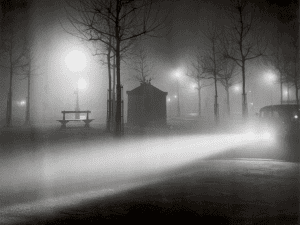There are 19 billion transistors inside Apple’s newest smartphone, the iPhone 15 Pro. That’s compared to one billion in the iPhone 6, released just ten years ago. Yet the size of the device has barely changed. How? In computer science, this phenomenon is known as Moore’s law – referring to a prediction made in 1965 by Intel co-founder Gordon Moore. He said that processing power, dictated in part by the number of transistors we can fit on a microchip, would double every two years due to developments in integrated circuitry. So far, it has held true, with memory chips becoming more efficient and less expensive at an exponential rate. It’s why computers have gotten so powerful, so quickly. The next generation of IBM chips boasts transistors measuring 2nm – smaller than a strand of DNA. 50 billion fit onto a chip the size of a fingernail. As Intel says: “You can make something smaller and smaller and smaller… until you can’t.”



Christoph Morlinghaus is a German-born photographer interested in the complex yet unseen world of computer architecture. The Computerwelt series takes a close-up birds eye view of processors from Motorola, Intel and Cyrix. Remarkably, they resemble images we see daily on apps like Google Maps – aerial views of industrial developments or residential areas. “I opened them and an entire microcosmos, looking like a cityscape, became visible. The final images give us the opportunity to explore the insides of computer, to stroll through and get lost in it, take streets and avenues and discover detail.”



“These CPUs are hidden in electronic waste, ignored, invisible, useless. This series presents images of forgotten memory, but it’s also about what happens hidden behind the scenes in our daily lives, unseen but ubiquitous. It is a glimpse into the technology we take for granted.” Capturing images like this takes time and precision. “The CPUs are not much bigger than 1/4 inch on the long side and were shot on 8×10’’ large format film. Just the camera extension was 7’, and it took numerous attempts to get an image without blur.”
All images courtesy Christoph Morlinghaus, from Computerwelt.





